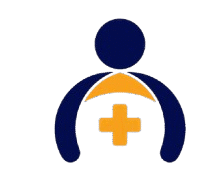Handling Septic Shock & Infection Recovery at Home – ICU Support in Gurgaon
Handling Septic Shock & Severe Infection Recovery at Home – ICU‑Grade Support in Gurgaon
Updated July 2025 | Author: AtHomeCare Critical‑Care Team
Sepsis kills someone every 4 seconds worldwide. Yet many Gurgaon patients stabilize in hospital ICUs, only to relapse after discharge. With AtHomeCare’s ICU‑at‑Home platform, families can extend hospital‑grade monitoring, antibiotic precision, and organ‑support equipment into their bedrooms—cutting readmissions, lowering infection risk, and speeding recovery.
1 | Sepsis & Septic Shock – A Quick Refresher
Sepsis is the body’s extreme, dysregulated response to infection. It can progress to septic shock—life‑threatening organ failure with persistent hypotension despite fluids. Common sources:
- Pneumonia & COVID‑related lung infections
- Urinary‑tract infections (esp. catheter‑associated)
- Post‑operative wound contamination
- Skin & soft‑tissue infections (cellulitis, diabetic foot)
Early goal‑directed therapy (fluids + antibiotics ≤ 1 h) is proven to save lives. Once stabilized, continuing ICU‑level monitoring, early mobilisation, and timely labs at home can prevent a costly readmission.
2 | Why Move a Sepsis Patient to Home ICU?
- Lower nosocomial infection risk – avoid MDR bugs.
- Emotional comfort – better sleep cycles, familiar voices.
- Cost control – private ICU ≈ ₹40–60 k/day vs home bundle.
- One‑to‑one nurse ratio – impossible in wards.
- Family oversight – real‑time vitals via AtHomeCare app.
3 | Who Qualifies for Home‑Based Sepsis Care?
- Haemodynamically stable (MAP > 65 mmHg on low/zero vasopressor)
- Lactate trending downward < 2 mmol/L
- Controlled source (e.g., abscess drained, catheter changed)
- Family consent & space for equipment (10×12 ft room)
Not ready? We can start with advanced nursing and step‑up to full ICU if vitals deteriorate.
4 | Equipment Delivered in 4–6 h Across Gurgaon
| Device | Role in Sepsis Recovery | Brand Used |
|---|---|---|
| Multipara Monitor | Continuous BP, ECG, SpO2, temp with alarm to nurse phone | Philips Efficia C1 |
| Infusion Pump (×2) | Accurate IV antibiotic & vasopressor rates | Mindray SP750 |
| O2 Concentrator 5–10 L | Wean from Venturi mask to nasal cannula safely | Oxymed Oxy5 Neo |
| Portable Suction | Clear secretions & prevent aspiration | Romsons VacuAide |
| Hospital Bed + Air Mattress | Proning, pressure‑ulcer prevention | Paramount Five‑function |
Need single items? Browse our equipment rental page →
5 | ICU‑Trained Nurses & Evidence‑Based Protocols
5.1 Hourly & Shift Responsibilities
- Vitals & fluid balance chart every hour
- CRP, procalcitonin & CBC trend tracking with at‑home labs
- Line care: central/PICC dressing per CDC guidelines
- Strict hand hygiene & PPE usage
- Antibiotic stewardship: double‑check drug, dose, time
5.2 Escalation Flow‑Chart (“Gold‑30”)
- MAP < 65 mmHg → fluid bolus 250 ml RL
- No MAP rise in 30 min → call duty doctor → start low‑dose norad via pump
- Lactate re‑check in 2 h; if rising → recommend hospital shift
6 | Beyond Antibiotics – Rehab, Nutrition & Mental Health
6.1 Early Mobilisation & Physio
- Passive ROM on Day 1
- Sit‑to‑stand with walker Day 2–3
- Pursed‑lip breathing & incentive spirometry
Book a session via Physiotherapy at Home.
6.2 Immune‑Boost Nutrition
- 30 kcal/kg/day: high‑protein shakes, arginine, zinc, omega‑3
- Glycaemic control with low‑GI carbs
- Dietitian video check‑in every 48 h
6.3 Psychological Support
Sepsis survivors often face PTSD. Our elder‑care companions provide cognitive stimulation, music therapy, and coping exercises.
7 | Cost & Insurance Essentials (No Competitor Names Shown)
Home ICU costs vary by equipment & nurse hours. On average, families spend 60–70 % less than extended private ICU stays.
- Equipment bundle – daily or monthly
- 12‑hr / 24‑hr nurse tier pricing
- Doctor rounds (optional)
- GST & consumables as per usage
Many corporate health covers reimburse home ICU; we supply itemised invoices for cashless or reimbursement claims.
8 | Gurgaon Case Snapshots
9 | How We Onboard Your Home ICU in 6 Simple Steps
- Hospital Co‑ordination: Our clinical head meets the treating intensivist.
- Equipment Delivery: All devices arrive within 6 h across Gurgaon sectors.
- Nurse Handover: Detailed SBAR from hospital nurse → home nurse.
- Lab & Pharmacy Tie‑in: Set daily pickup for CRP, CBC; 24×7 in‑house pharmacy.
- Tele‑ICU Dashboard: Vital streams share to AtHomeCare doctor panel.
- Step‑Down: We taper equipment & nursing as patient stabilises.
Free Sepsis‑Recovery Readiness Call
📞 +91 99108 23218 | 💬 WhatsApp Now
Our critical‑care coordinator will assess suitability, share a custom checklist, and book same‑day installation if required.
10 | Frequently Asked Questions
Can septic shock truly be managed at home?
Yes—once stabilised, continued ICU‑grade monitoring, precise antibiotics, and rapid lab turn‑arounds make home recovery safe.
Do you provide vasopressor infusions at home?
Low‑dose noradrenaline or vasopressin can be run via battery infusion pumps under doctor oversight; high doses still require hospital.
How fast can equipment reach New Gurgaon?
Within 4–6 hours from confirmation; emergency oxygen in 90 minutes.
For more details on ICU setups, ventilators, patient monitors, and other advanced medical equipment, please visit our dedicated portal at homeicu.athomecare.in.
